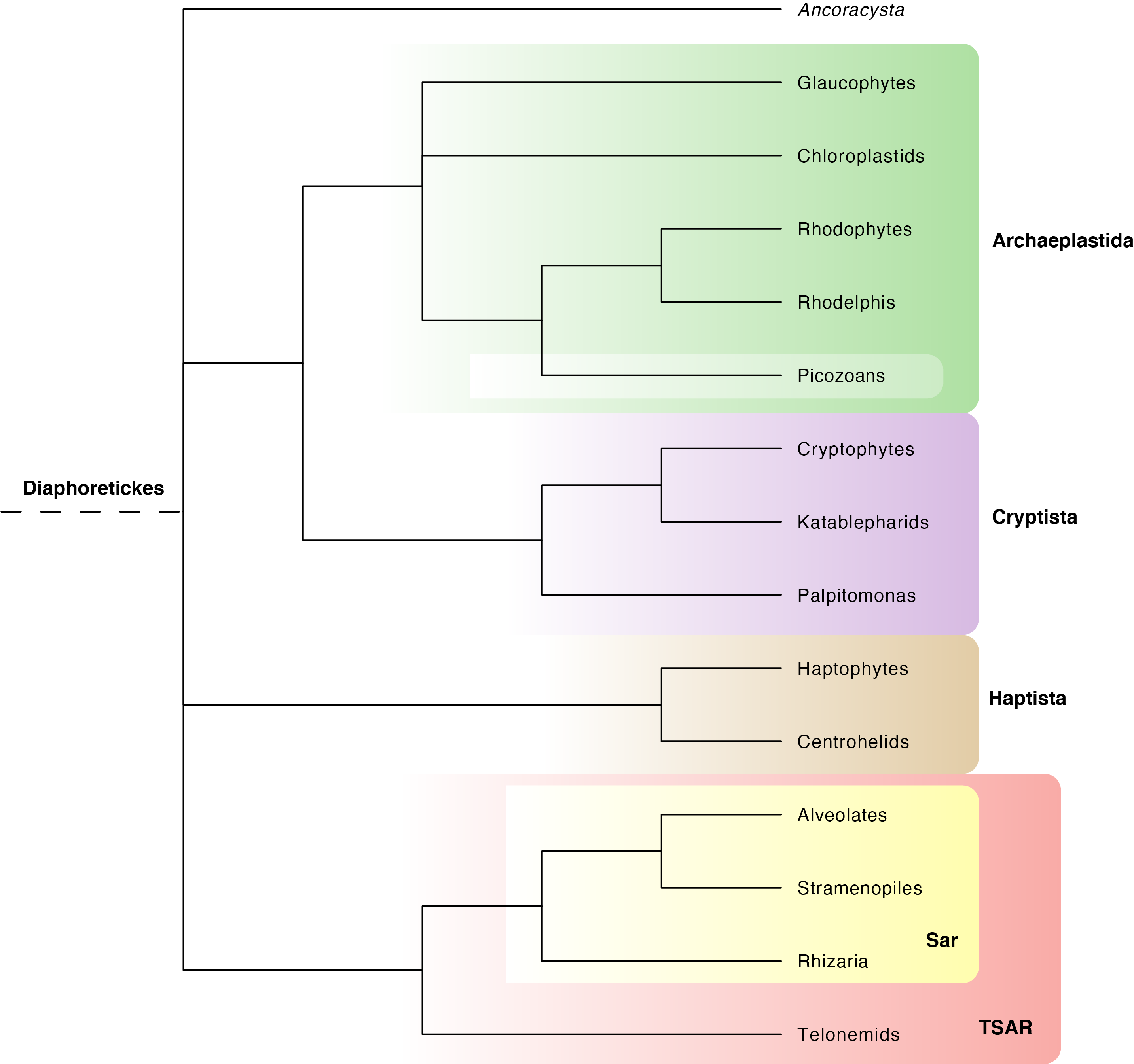Diaphoretickes
Back to main indexLike the Amorphea super-phylogeny, the Diaphoretickes group together a set of lineages based on molecular phylogenies (Figure 215). The organisms listed here also bear little resemblance, as some remain phagotrophs and others have adopted an osmotrophic lifestyle. But, the most striking lifestyle among Diaphoretickes is that of photosynthetic photoautotrophs, because it is in this super-phylum that most photosynthetic lineages are found, all from primary endosymbioses and most of the ones from secondary and tertiary endosymbioses. The reasons for the ability to engage in mutualistic endosymbiosis with photosynthetic organisms remain unclear. The discovery of genes involved in the biosynthesis of reserve polymers believed to originate from Chlamydiae suggested, at least for primary endosymbiosis, that the presence of intracellular pathogenic bacteria may have aided the establishment of the symbiosis. However, this theory is still debated and does not seem to be able to explain the multiple secondary and tertiary endosymbioses.

Figure 215.
Phylogeny of Diaphoretickes.Among the shared characters of the Diaphoretickes, we can cite the presence, at least initially, of two flagella in the forward position. Obviously, in a large number of lineages, especially those which are photosynthetic, the flagella have disappeared and in contrast have multiplied in Ciliophora and Opalinata. The presence of two flagella, as in the Excavata, confirms the biflagellate structure of the eukaryotic ancestor. Molecular phylogenies give divergent results, in particular for the lines grouped together in the probably polyphyletic super-phylogeny of “Hacrobia” [Translator’s note: Hacrobia have now conclusively been shown to be polyphyletic, and have been been split into Haptista (i.e. Haptophytes and Centrohelids), and Cryptista (i.e. Cryptophytes and Katablepharids). Additionally, Picozoa which was previously placed in Hacrobia, are now confidently placed in the Archaeplastida, and finally, Telonemia have been shown to be sister to the diverse SAR clade.]. Even groups with a clear shared character such as Archaeplastida, which includes organisms derived from the primary endosymbiosis of the plastid, have phylogenies still under discussion. The most current classification is shown in Figure 215.
Back to chapter index